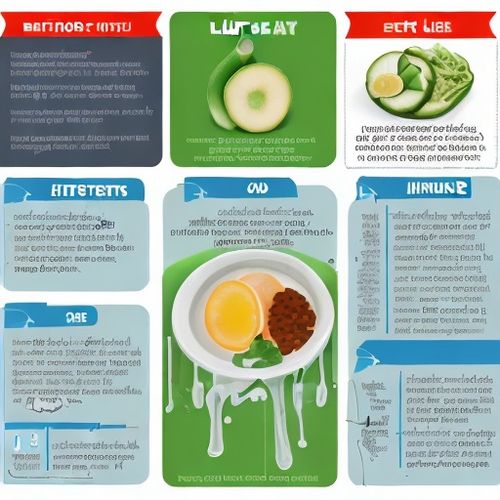The concept of anti-inflammatory eating has gained significant traction in recent years as research continues to uncover the links between chronic inflammation and numerous health conditions. At the heart of this nutritional approach lies an often-overlooked but crucial metric: the ORAC value. Standing for Oxygen Radical Absorbance Capacity, ORAC measures a food's ability to neutralize free radicals and combat oxidative stress in the body.
Understanding ORAC values requires delving into the biochemical warfare constantly occurring within our cells. Every day, our bodies face attacks from reactive oxygen species (ROS) - unstable molecules that damage cellular structures through oxidation. While our systems naturally produce antioxidants to counter these threats, the modern environment with its pollutants, processed foods, and stressors creates an antioxidant deficit for many individuals. This is where high-ORAC foods become invaluable soldiers in our internal defense system.
The relationship between ORAC values and inflammation is more intricate than it might initially appear. Chronic inflammation often begins with oxidative stress - when free radicals overwhelm the body's antioxidant defenses. This oxidative damage triggers inflammatory responses as the immune system attempts to repair the affected tissues. By consuming foods with high ORAC scores, we essentially provide our bodies with reinforcements to prevent this destructive cycle before it begins.
Scientific studies have demonstrated that populations consuming diets rich in high-ORAC foods tend to exhibit lower markers of systemic inflammation. The flavonoids, polyphenols, and other phytochemicals responsible for these foods' antioxidant capacities also modulate inflammatory pathways at the molecular level. For instance, compounds like quercetin in onions and anthocyanins in berries don't just scavenge free radicals; they also inhibit pro-inflammatory enzymes like cyclooxygenase (COX) and reduce the production of inflammatory cytokines.
When constructing an anti-inflammatory diet focused on ORAC values, diversity becomes paramount. No single food contains all the necessary antioxidants, and different compounds work synergistically to enhance each other's effects. Deeply pigmented fruits and vegetables typically lead the ORAC rankings, with spices and certain nuts following closely behind. The vibrant colors in these foods often signal the presence of potent antioxidants - the deep purple of an eggplant, the rich orange of a sweet potato, or the crimson of a pomegranate all indicate valuable phytochemical content.
Practical application of ORAC principles doesn't require complicated calculations or obsessive scoring. Rather than fixating on exact numbers, which can vary based on growing conditions and testing methods, it's more beneficial to focus on regularly incorporating a variety of high-ORAC foods. A simple approach might involve ensuring that each meal contains at least one brightly colored fruit or vegetable, using herbs and spices liberally, and choosing whole foods over processed alternatives whenever possible.
The preparation methods we use can significantly impact the ORAC values of our foods. While some nutrients become more bioavailable with cooking (like lycopene in tomatoes), others are heat-sensitive. Water-soluble antioxidants may leach out during boiling, while dry-heat methods like roasting can concentrate certain compounds. Eating a mix of raw and cooked high-ORAC foods helps maximize the range of antioxidants we consume. Fermentation presents another interesting preparation method, as it can actually increase the antioxidant capacity of some foods through microbial action.
Seasonality plays a crucial role in optimizing ORAC intake. Plants produce many antioxidants as protective compounds against environmental stressors like intense sunlight or pests. Consequently, fruits and vegetables harvested at their seasonal peak often contain higher levels of these beneficial compounds than those grown out of season or picked prematurely for shipping. This explains why a summer-ripe strawberry from a local farm typically outperforms its winter grocery store counterpart in both flavor and antioxidant content.
The synergy between different antioxidants highlights why whole foods surpass supplements in anti-inflammatory efficacy. Isolated compounds often fail to replicate the benefits seen with whole food consumption because they lack the complementary phytochemicals that enhance absorption and activity. A blueberry's anti-inflammatory power comes from the complex interplay of its fiber, vitamins, and hundreds of phytochemicals - something no single supplement can duplicate.
Emerging research suggests that the gut microbiome mediates much of the anti-inflammatory effects of high-ORAC foods. Many plant antioxidants aren't absorbed directly in the small intestine but instead undergo transformation by gut bacteria into bioactive metabolites. This helps explain why individuals with diverse gut microbiomes often show better responses to antioxidant-rich diets. Prebiotic fibers found in many high-ORAC foods further support this relationship by nourishing beneficial gut bacteria.
While ORAC values provide a useful framework, they represent just one dimension of an anti-inflammatory diet. The overall dietary pattern matters immensely - no amount of berries can counteract the inflammatory effects of excessive sugar, refined carbs, or unhealthy fats. An effective anti-inflammatory approach combines high-ORAC foods with adequate omega-3 fatty acids, quality proteins, and minimally processed ingredients while avoiding known inflammatory triggers.
Long-term adherence to an antioxidant-rich diet appears to offer cumulative benefits that short-term interventions can't match. Unlike pharmaceutical anti-inflammatories that provide immediate but temporary relief, dietary antioxidants work gradually to reshape the body's inflammatory landscape. Regular consumption builds up antioxidant reserves in tissues and may even upregulate the body's own antioxidant production systems through processes like nuclear factor erythroid 2-related factor 2 (Nrf2) activation.
The global variations in traditional diets offer fascinating insights into ORAC optimization through cultural wisdom. Mediterranean, Okinawan, and certain West African diets - all associated with longevity and low inflammation - naturally emphasize high-ORAC ingredients like olive oil, purple sweet potatoes, and native berries. These dietary patterns evolved not through antioxidant analysis but through observable health outcomes, now explainable through modern nutritional science.
Practical challenges in maintaining a high-ORAC diet often involve accessibility, cost, and convenience. While some powerhouse ingredients like spices offer concentrated antioxidants at low cost, others like fresh berries or specialty vegetables may be expensive or difficult to source year-round. Frozen fruits and vegetables present a viable alternative, as they're typically processed at peak ripeness and retain most of their antioxidant capacity. Dried herbs and powdered spices also maintain excellent ORAC values while offering extended shelf life.
The psychological aspect of dietary change shouldn't be underestimated when shifting to an anti-inflammatory, high-ORAC eating pattern. Rather than framing it as restriction, successful adopters often focus on discovery - exploring new flavors, learning different preparation methods, and appreciating the vibrant colors that signal nutritional potency. This mindset shift transforms the diet from a temporary intervention into a sustainable lifestyle.
As research continues to evolve, our understanding of ORAC values and inflammation will undoubtedly become more nuanced. What remains clear is that diets rich in diverse, minimally processed plant foods provide the foundation for reducing oxidative stress and chronic inflammation. By making conscious choices to include high-ORAC ingredients in our daily meals, we equip our bodies with the tools needed to maintain balance in an increasingly challenging environment.

By Sarah Davis/May 19, 2025

By Natalie Campbell/May 19, 2025

By George Bailey/May 19, 2025

By Lily Simpson/May 19, 2025

By David Anderson/May 19, 2025

By Olivia Reed/May 19, 2025

By Amanda Phillips/May 19, 2025

By Sophia Lewis/May 19, 2025

By Olivia Reed/May 19, 2025

By Emily Johnson/May 19, 2025

By John Smith/May 18, 2025

By Eric Ward/May 18, 2025

By Jessica Lee/May 18, 2025

By Jessica Lee/May 18, 2025

By Sophia Lewis/May 18, 2025

By Rebecca Stewart/May 18, 2025

By Emily Johnson/May 18, 2025

By Rebecca Stewart/May 18, 2025

By Megan Clark/May 18, 2025

By Megan Clark/May 18, 2025